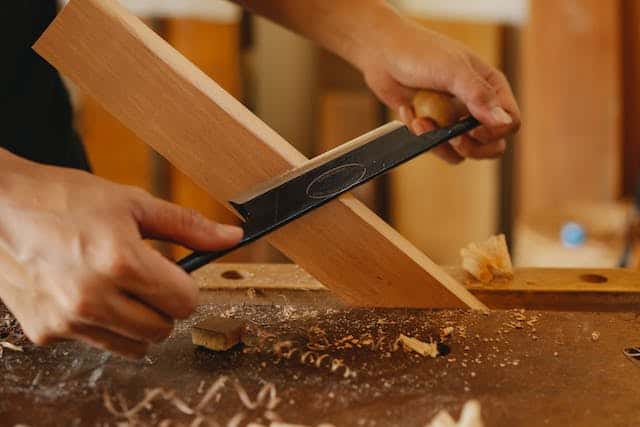When you work with green and not only wood , the two handed drawknife is a woodworking hand tool , you’ll need for sure in some stages of your work .
It’s a traditional tool , very easy to use even if it has some use “secrets” and of course it needs your safety attention as all the sharp tools .
Dangers excist in the tools area and here a what you should be aware , old safety article from me .
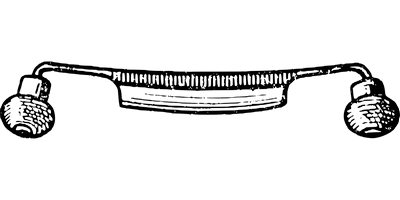
The two handed drawknife is a hand tool that consists of a flattened and wide metalic blade , being sharp in one side of its longer central part and having two handles in its end (on piece or not with the blade) angled close to 90o and some times below the blade’s straight line , making a Π shape .
What is a drawknife , Used for ?
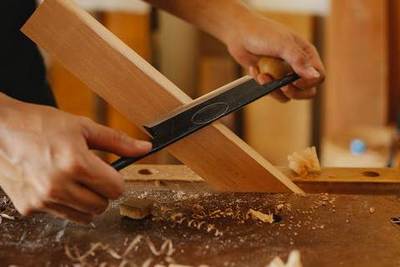
We use the drawknife to slice big parts and roughly of a wood’s mass , very easy and fast in order to change its shape , the flattness , to correct fast a curviness , to lower its level in every spot – area we want , to “clean” an area fast without carring much for precision .
If we like and be more carefull to our slicing , we can use a drawknife to slice with bigger precision a wooden surface – spot , but a drawknife isn’t a high precision hand tool , as a chisel , a spokeshave , et.c .
The drawknife is usually used along with a shaving horse , or for sure a vise , in order to keep our wood piece totally stable while we’re slicing . Safety is always in our minds .
Why , use a drawknife ?
Using a drawknife , you can create any change( mostly roughly ) to a wooden surface , concerning the flattness and the curviness and change the thickness of its entire mass in an area , very fast in order to proceed to your other woodworking jobs .
You can “clean” a freshly chopped tree trunk , for its peel and several bumps . You can shape – reshape – refine enough , or reduce the diameter of a big or small log , or any round wood piece , cricket’s sticks , et.c .
You can create round wood pieces from a square wood piece . You can smooth out quite a bit , a sharp end edge of a trunk or a log , or any sharp edge .
You can create small – big or very big dowels for your joinery and make – refine , whatever spoke or wooden stick you like , mostly big ones .
What are the different Types of drawknives ?
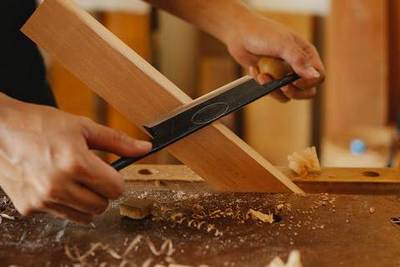
We have the straight drawknives , the curved ones and the spokeshaves .
We have also drawknives which are all one piece ( blade – 2 handles ) , but we have drawknives in which the handles are attached(screws) to the blade and can be angle adjusted .
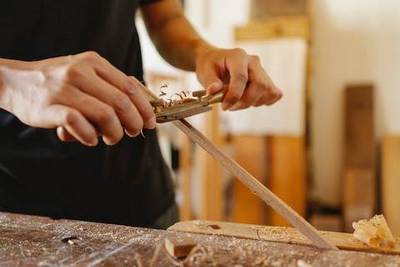
Is a Curved or a Straight drawknife , Better ?

The straight drawknife is better to the totally flat surfaces , making the flatness be more easy than a curved one , which can slice deeper with less effort and more “targeted” a specific wooden area .
How do you Use , a drawknife ?
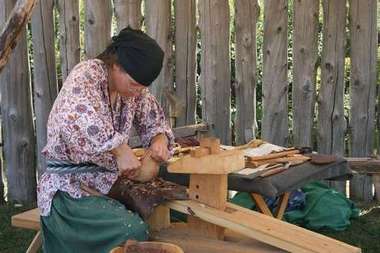
You sit in your shaving horse or wherever you like and you place your wood piece in front of you , totally secured and stable . Remember you’re dealing with a sharp and big blade .
We slice wood with a drawkife , only along the grain , so place it accordingly .
You have the wood piece in a position to be comfortable with . Not too long , not too close to your belly – body .
You grab the drawknife with your two hands ( zero slippery allowed ) and you start moving – pulling the drawknife with total control , from the long spot towards to your body , slicing wood , along its grain of course .
Are there any “Secrets” , for the drawknife’s Use ?
Yes , there are . Make small lengths slicing movements and don’t try to remove big wood parts – mass , at once .
Your wrists should be as straight as you can while during the entire movement , so adjust your sitting position to be comfortable .
For better and easier slicing you move your drawknife a little angled(diagonally) to the wood piece , in order to make the cutting easier .
A drawknife can be used and upside down , having the bevel up or the bevel down , if you like and be comnfortable with . The common is the bevel down of course , but you may need to use it otherwise for a reason .
If you use it with the bevel up , the back should be a little curved to make easier the cutting and the blade doesn’t get stick , not allowing a nice and smoothly controlled slicing move .
What is the best Angle for a drawknife ?
There are no unbrokken “laws” in here , but the most common slicing angles for a drawknife are around the 30o degrees .
How Long is a drawknife ?
We have 5 ” – 6″ – 8″ – 10″ inches of drawknives , with the most common ones , be the 5 ” and the 10 ” .
What is the difference , between a Spokeshave and a Drawknife ?
The spokeshave is making elite , more “surgical” slicing , to a wooden surface and can follow whatever architect – vintage curve – cavity , et.c , design you have with big precision .
Here are some of my nice and not expensive , spokeshave suggestions for you .
The drawknife is for way bigger wood removal , even if it has the ability to refine enough a surface , but in no way close to the spokeshave results .
Should a drawknife , be Sharp ?
Yes , it should and the sharper , the better and here is another small “secret” .
If you have a thin enough blade , you can have a shorter bevel of the blade and this is very important for slicing concave wood pieces . You can penetrate – “squeeze” more easily to cavities .
How do you sharpen a drawknife ?
There are many sharpening ways and materials( ceramic – diamond stones , et. c ) for sharpening a drawknife and every woodworker has his own favorite one .
Whatever works for you and you’re comfortable with , follow it .
In a quick ( but complete ) mode , here are my suggestion steps for sharpening :
1) Make an inspection to your drawknife blade . If there is a tiny scar from a hit , a big dent , et.c , use a small light hammer and a fine file and correct it .
2) Check if the sharp edge and the back of the blade is equal and parallel to each other . If there is a theme , use your grinder to reshape it and make it parallel and with equal thickness.
2) Use a light sandpaper to pass the entire blade and erase maybe a little rust , et.c . The blade should be “clean” .
3) Place your drawknife somewhere steady . I place the one handle my chest or belly and i hold the other with my other hand , having an “open field” to the cutting blade .
If it fits , put the drawknife between your elbow and your palm !!!!! It’s a very comfortable place .
4) I use a variety of sharpening stones , some ceramic and some diamond ones . Always start from the roughest to the most refine one .
5) I don’t pass the drawknife above the stones . I pass the stones above the blade . It’s better and way more safer .
6) Pass the stones above the blade , with equal and a smooth confident movement .
7) Continue sharpening and finish with the lighter stone till your blade is sharp as you like .
8) When you finish , make sure you’ve removed the unwanted burr from the back of the blade , which should be totally smooth in order to slip well , while you’re sharpening .
What is the difference , between a Bark Spud and a drawknife ?
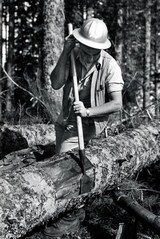
The bark spud is like the shovel tool , and even if it may look similar to a drawknife concerning its debarking job , it cannot compare to a drawknife , which can slice – shape – refine a surface , except its debarking capabilities .
The drawknife can be totally controlled by your two hands , while the bark spud uses more the shovel type of motion to remove the peel of a tree trunk .
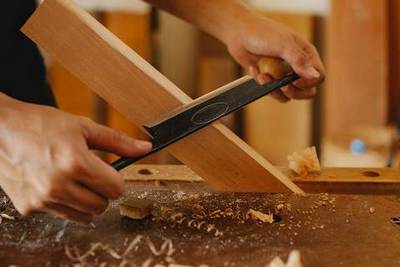
The drawknife makes way more precise wood slicing in flat and curved surfaces , than the bark spud is only used for debarking and no more than that .
The bark spud cannnot shape – slice a wooden surface in no way .
How do i Choose a drawknife ?
1) First of all a good drawknife has a very high quality metal alloy , which can be sharpened very good and keep the sharpening for a long time .
2) The general construction and design( curves , bevel , weight ) should be very “handy” and comfortable to the carpenter and the handles angles and design , should give the best feeling and control .
3) The handles should not in any way be slippery and make by a slippery material . You safety is always a first priority .
You seek for the “golden balance” between the efficiency – comfort and feeling for a good drawknife .
How do you Take Care a drawknife ?
1) Avoid to throw it her and there and general avoid to hit and damage its metal .
2) Always wipe it from wood fluids, water , et.c .
3) Make inspections often and correct issues .
4) Use some oil for its metal maintenance .
5) Storage it alone if you can and try not ot get hit by other metal tools .
6) Use some oil and wax for its wooden handles . See some great oils & waxes , HERE .
Do i Need a drawknife ?
The drawknife is a very versatile and super efficient hand tool for your green woodworking or not . It isn’t an expensive tool , but its help for several slicing types is unique .
Keep woodworking and be safe while doing it .
